

There are so many random things you can use for loose parts play! There will be items all around your house, in your shed, in the back of cupboards, in your kitchen – wherever there are odds and ends there are loose parts ready to be played with!
But what sorts of things are good for loose parts play?
The short answer is…
Select items that can have multiple purposes as materials for loose parts play. Any open ended materials you can find with interesting textures, smells, shapes, or any other properties are excellent for this purpose.
However, there is a whole lot more to it than that. You will probably want to know specifically what to use, and this article will give you exactly that.
I have split this up into 26 categories of objects, but there are quite a few ideas for each category. So this is at least 100 loose parts play ideas! (and probably more)
All of these are ideal for certainly children from 3 to 5, and many are perfect for children from birth (just think about safety with younger ones, and there’s a section on this near the end to help).
The big thing is to think about variety. Have a mix of large and small, natural and man-made, rough and smooth, heavy and light, and any other type of contrast you can think of.
Loose parts play is brilliant for developing children’s independence, engagement, problem solving skills, and learning across the whole curriculum. Research suggests it teaches imaginative play, helping build critical thinking and creativity (Source)
Right, here we go with the loose parts play materials…
Table of Contents
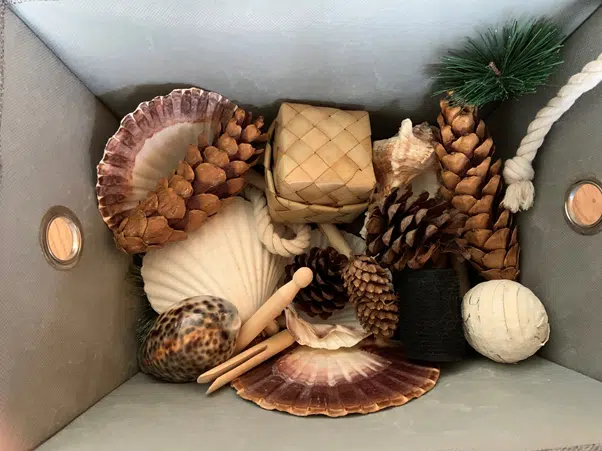
I thought I would start with an unusual one!
Water is a brilliant loose part. It has an infinite number of uses. Some different types of water lead to different types of learning.
The main sorts are:
The contrast between black and white is really stimulating to babies and toddlers in particular. This provides an extra level of interest, and fires their imagination.
Having a collection of black and white objects stored together in something like a treasure basket, or heuristic basket, really gets children’s interest. Some examples of black and white loose parts include:
Black – a belt, leather gloves, felt, scarves, wool
White – buttons, material, pegs, egg cups
There are all sorts of leaves that you can find, and they can be used in lots of different ways. Some great examples are:
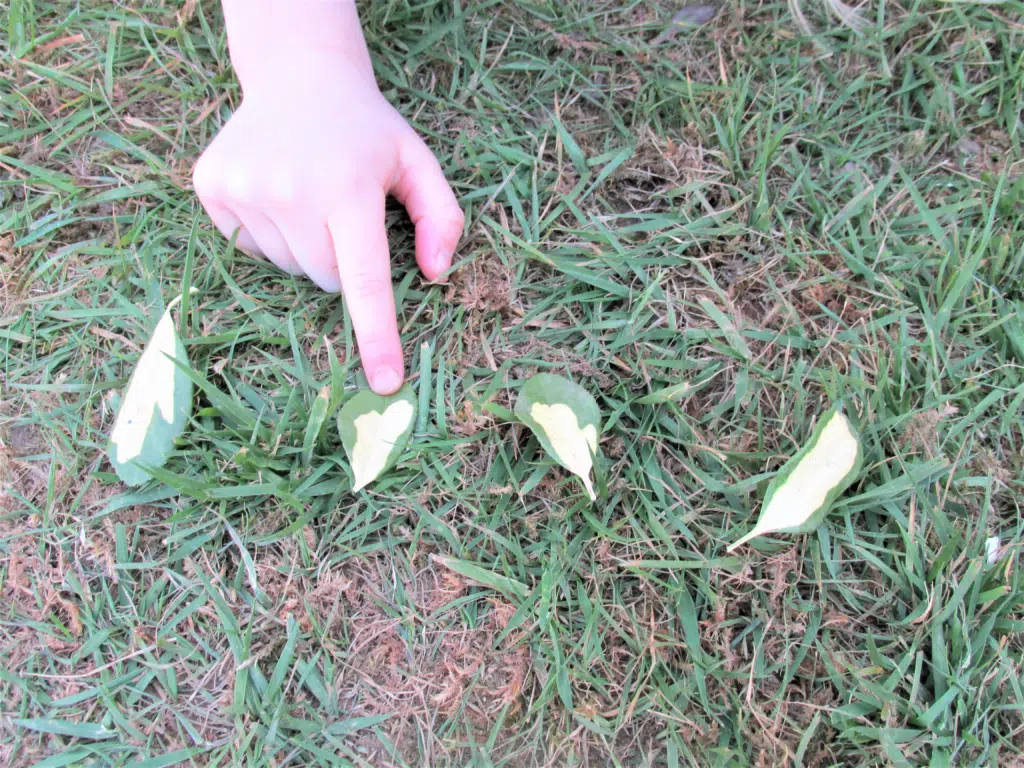
One of the great things about loose parts play is that it is multi-sensory. One sense that really engages children’s sense of curiosity is smell!
Here are some interestingly smelly items to jazz up loose parts play:
Children…are inventors, “safecrackers,” and re-builders of theories and behaviours that elude any presumptuousness or predictability of methods.
Loris Malguzzi
It is great to have a balance between things that are brightly colored, and those that are more naturally beige or wooden color.
Some bright things could be: bottle tops, pompoms, plastic pegs, gems
Some more natural/beige colors could be: wood slices, pebbles, corks, sticks
Tires are so engaging. They not only help encourage loose parts play but also develop gross motor skills!
They are great for all the vehicle enthusiasts out there, and there are always loads of those where young children are concerned.
Tires are great for stacking, rolling, turning into vehicles, sitting in, climbing, constructing, and so many other uses!
Some excellent types of tires you can use include:
Tires are brilliant for outdoor loose parts play. Tire activities are one of the favorite ideas in our online course ‘Outdoors On A Budget’. If you’re looking for inspiration to revamp your outdoor learning space on a budget, then check out the online course here.
This is another way of making loose parts as multi-sensory as possible. Things that make sounds develop children’s listening and attention skills. This is good for communication and also lays the foundations for phonics and early literacy.
Look for noisy loose parts materials such as the following:
These come in all sorts of wonderful colors, sizes and shapes.
Find as many different ones as you can.
They are great for filling with different things, as well as making patterns, and transitional art.
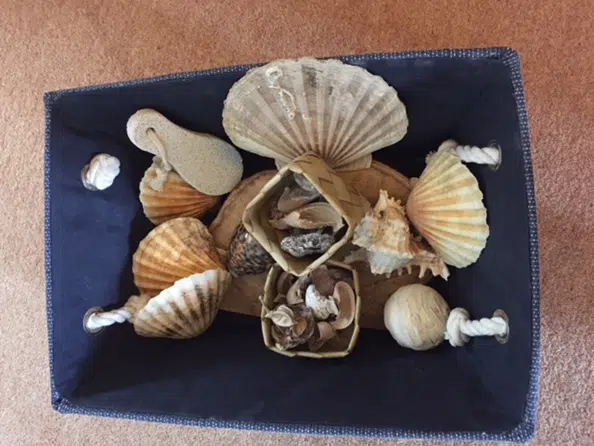
Wood is another thing that is the main material of many objects, both natural and man-made.
Here are some examples of wooden loose parts that you can use:
Flowers are a beautiful and engaging resource that even adults love just as much as children.
There are so many things about them that are interesting – their symmetry, their fabulous colors, their fragrance, their frailty and short-lived beauty.
There are many different types of flowers, and parts of flowers, such as:
There are loads of different types of seeds around, and they are great for loose parts play. They really work well with things like tweezers or tongs, and children can post them into different containers.
They are good for stacking, making maps, representing things in play, and many more things. Some good types of seed include:
They really love playing with this kind of stuff.
All these are excellent for fine motor skills, and all the twisting, turning and picking up they require.
They are also good for building and imagining. So take a look in your toolbox and see if you can find any…
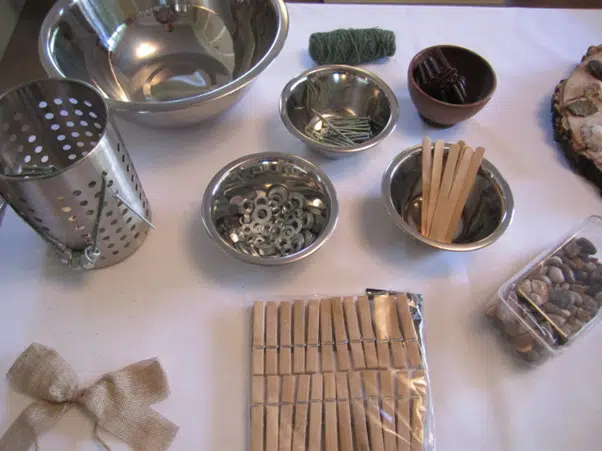
Brushes are obviously something that do have a use anyway, but can also be used for more random loose parts play. Brushes can represent things in a picture, such as a tree! They could be a character in small-world situations.
They are also really good for babies and toddlers in particular, for use in treasure baskets or for heuristic play.
Some varieties of brush include:
Sponges have a fascinating texture that children find really interesting.
Some are coarse, some are smoother. Here are some types to try:
These are something else that are a core ingredient of loose parts play.
Some different types of pebbles include:
Pebbles are one of the ultimate loose parts resources and can be used in other areas of the early years outside of loose parts. If you want to find out more about this, then why not take a look at this definitive guide to using story stones?
This is another more unusual idea, but a brilliant material to use as a loose part. Grass is so abundant, but yet so interesting!
It can have a wonderful smell, and be so versatile in art, storytelling, or construction.
Some types of grass you can use include:
In any environment, both the degree of inventiveness and creativity, and the possibility of discovery, are directly proportional to the number and kinds of variables in it.
Simon Nicholson
This is about a thousand loose parts play materials all in one category.
Any soft materials you can find are great for loose parts for many reasons. They are bendy, soft, or sometimes multicolored. You can wrap them around things.
Here are some types of textiles you can try out:
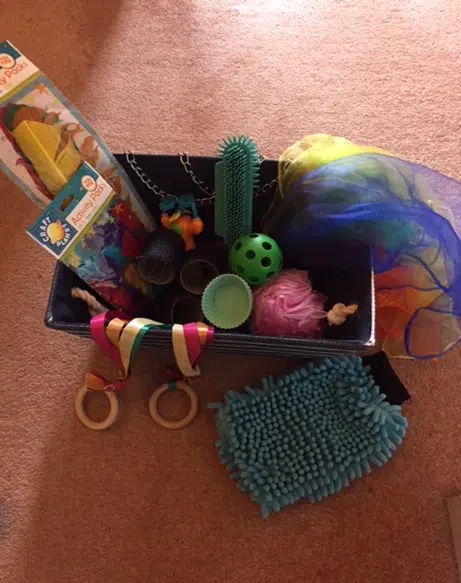
These are great for stacking, art, building, rolling, and many other things too.
They are good in water play because they don’t sink.
You can buy packets of corks all in one go, or collect them whenever you have a spare one.
This is another category that has multiple types of substances involved.
Dirt is great for mark-making, building, exploring, and investigating. Some excellent types of dirt for loose parts includes:
Plastic is just as much a loose part as any other type of material. Things do not have to be natural to inspire learning, although there are undoubtedly advantages of using natural materials a lot of the time.
Plastic containers are good open ended materials, particularly for posting, containing things, transporting, building, and many other things.
Some good things to use include:
Be careful of any jagged bits with any tins or cans you use.
As long as they are safe they are great for all sorts of imaginative play.
Use tins and cans of different sizes and shapes.
These are something that children can do all sorts with.
They love using them in big outdoor construction. They are great for loose parts role-play, for example making a pretend pirate ship.
You will see groups of children walking around holding them, or balancing on them to walk along.
You can find ropes of different sizes such as the following:
These can be very exciting. They are great for all sorts of imaginative play, such as capturing ‘baddies’. Also, you can hang things from them such as coat hangers.
The main difference in the types of chains you can get is the size – get large and small if you can.
Posting things into pots is one of the most exciting activities for many young children.
There are many varied containers you could find, and a whole host of uses children will come up with. Some containers include:
Who would associate paper as being a loose part?!
But of course, it is!
Paper can be used to write on, but that is just one of its uses as far as young children are concerned.
It can also be used to build, rip up and use as part of transitional art, to add to their construction, or use in role-play or other situations.
Here are some types of paper you could use:
If you know a plumber or anyone who maybe works on a building site, they can be a brilliant source of receiving loose parts!
Any parts that can be used for plumbing, can be used for play, and the more random the better. Some super things to use include:
All these loose parts play materials are excellent for investigating, making ramps, waterplay, big-scale construction, making obstacle courses, and lots of other types of loose parts play as well.
Loose parts play is not really very risky, but here are some pointers just to help you safely manage any risks that might come along:
If you’re passionate about creating an outstanding culture of loose parts play, then check out our online course – Project Loose Parts. This 2-hour video training provides a full toolkit of all the provocations and ideas you could ever need, plus a high-quality framework and timeline in which to implement it.
This article is just one of many I have written about loose parts play.
I really would recommend you check out the book I wrote along with Debby Stevens – Loose Parts Play – A Beginners Guide This book has now been read by more than 10,000 people.
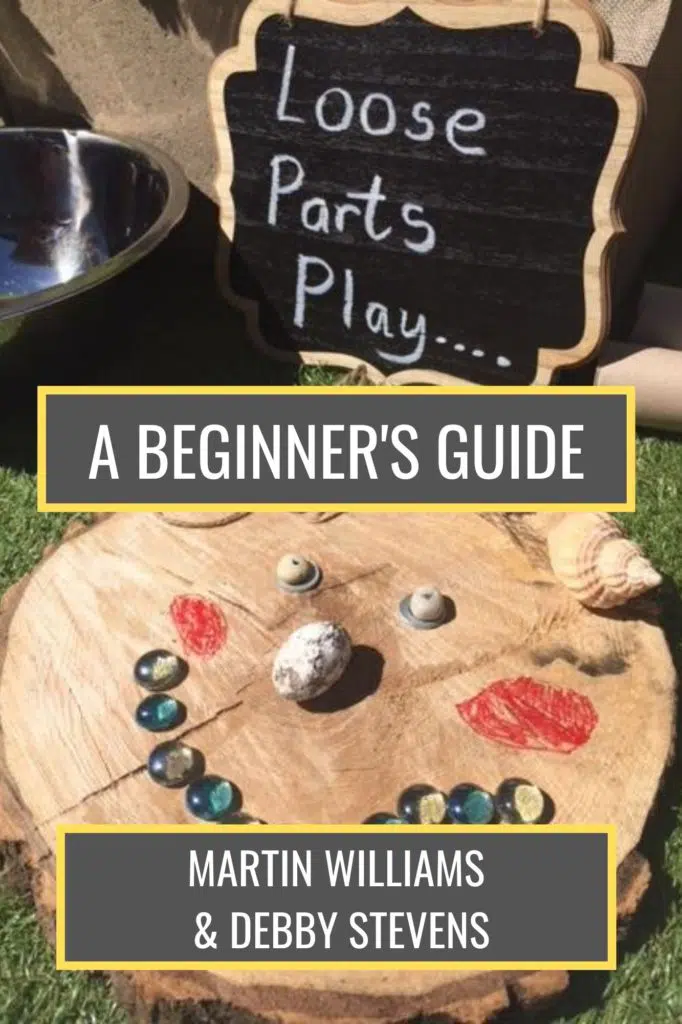
Also, here are some other articles you might like if you’ve found this one useful: